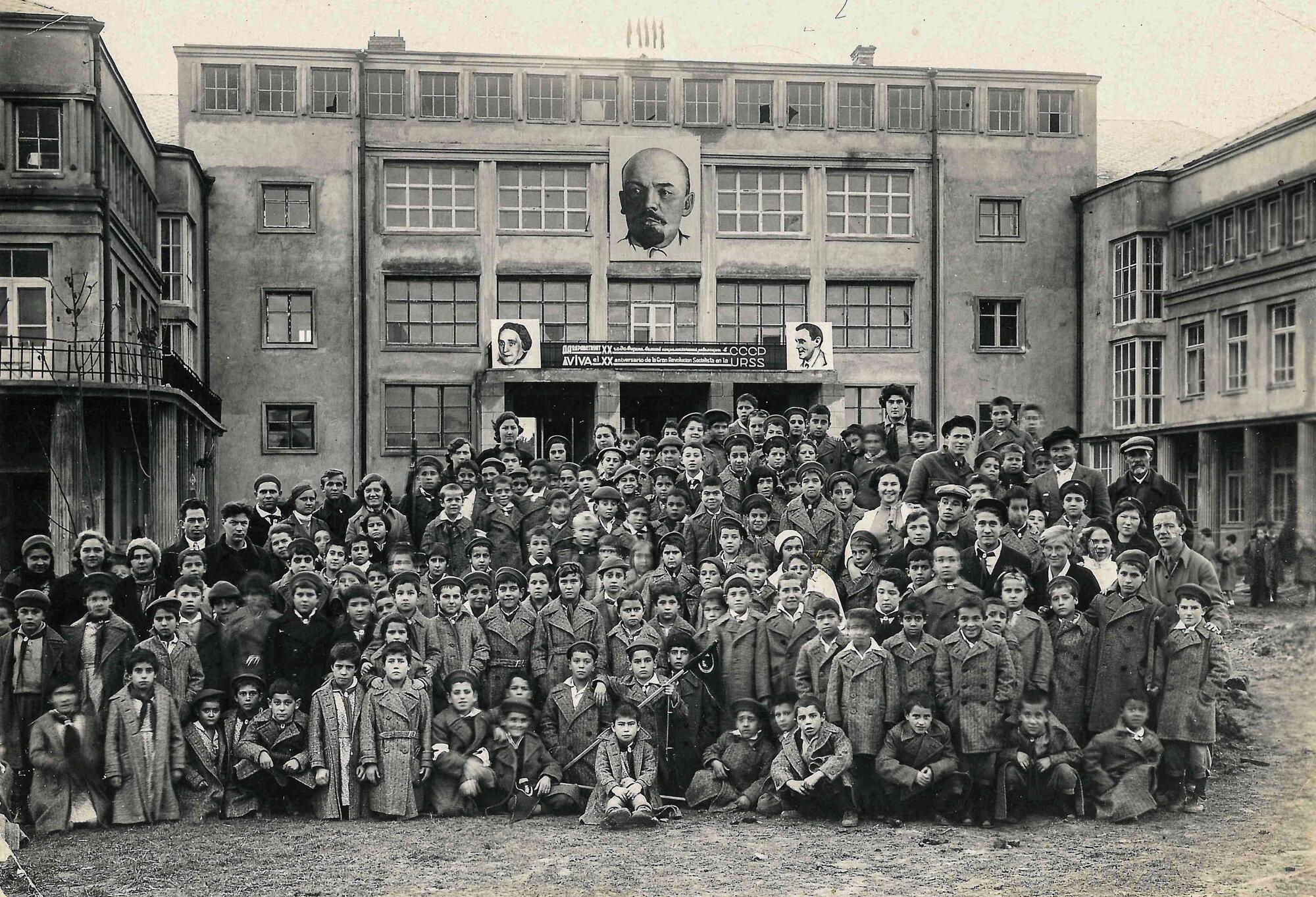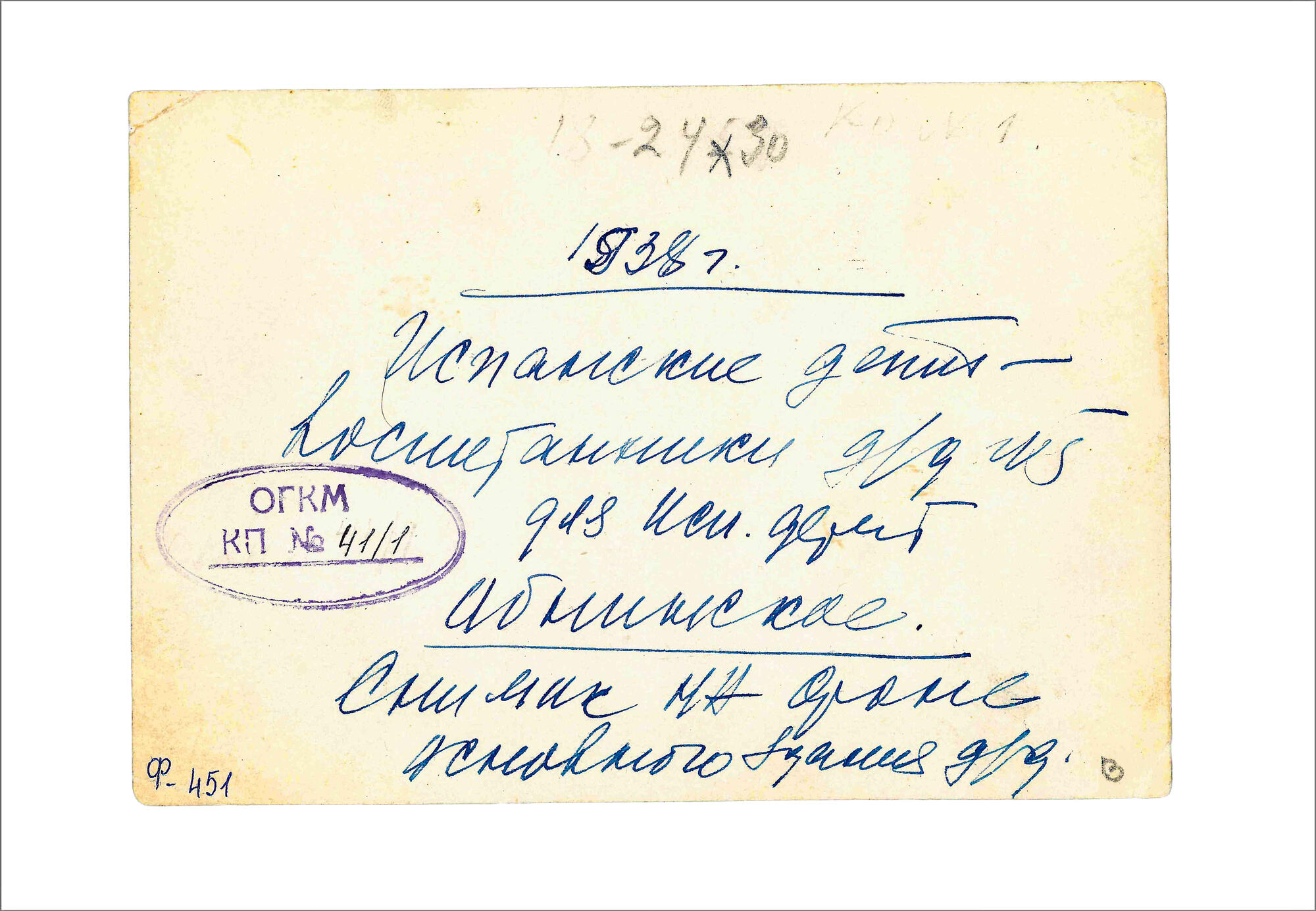In 1936 a civil war started in Spain. Revolts by pro-fascist forces against the republican government broke out in various regions. The Soviet Union assisted Spain in fighting the enemy. It was decided to establish several orphanages in the Soviet Union for the children of Spanish republicans, who wanted to escape the horrors of war and terror.
Over a period of two years more than 30,000 little Spaniards left their homeland. At 2pm on 23 June, 1937 a special train brought some 500 children and 20 accompanying carers to the Obninskoye station in Kaluga Oblast. They were accommodated in a new building, intended for a health resort school. Until 1947, Spanish Children’s Home No. 5 was housed there; today, the building houses the main block of the Institute of Physics and Power Engineering in Obninsk.
The Spanish children, like their Soviet age-mates, went to school, attended clubs and played sports. They became good friends with the pupils of School named after Shatsky, which was nearby. The Spanish boys were very proud of their football team. In September 1937, they played in Moscow against the Soviet junior team — the audience was struck by the energy and passion of the Spaniards, who were nicknamed the “little devils”. One of the members of the Spanish team, Augustino Gomez, grew up to become a famous player.
Soviet poets, composers and artists came to visit the Spanish children. It was a great treat for the kids when the leaders of the Spanish Communist Party who closely monitored the fate of the Spanish emigrants came for a visit. On July 12, 1938 there was an event which the children had a lasting memory of. A group of aircraft carrying Heroes of the Soviet Union, pilots Marina Raskova and Valentina Grizodubova, landed on the grounds of Spanish Children’s Home.
The Spanish children had a strong friendship with the painter Pyotr Konchalovsky. His dacha Bugry was nearby and they visited him. Konchalovsky painted a number of scenes from the everyday life at Spanish Children’s Home.
At the outbreak of the Great Patriotic War, the younger children were evacuated to Saratov Oblast, and the older children enrolled in the paramilitary fighting detachment set up at the orphanage. The Spanish children were only able to return home in 1956, but many opted for Soviet citizenship and remained in the USSR.
Over a period of two years more than 30,000 little Spaniards left their homeland. At 2pm on 23 June, 1937 a special train brought some 500 children and 20 accompanying carers to the Obninskoye station in Kaluga Oblast. They were accommodated in a new building, intended for a health resort school. Until 1947, Spanish Children’s Home No. 5 was housed there; today, the building houses the main block of the Institute of Physics and Power Engineering in Obninsk.
The Spanish children, like their Soviet age-mates, went to school, attended clubs and played sports. They became good friends with the pupils of School named after Shatsky, which was nearby. The Spanish boys were very proud of their football team. In September 1937, they played in Moscow against the Soviet junior team — the audience was struck by the energy and passion of the Spaniards, who were nicknamed the “little devils”. One of the members of the Spanish team, Augustino Gomez, grew up to become a famous player.
Soviet poets, composers and artists came to visit the Spanish children. It was a great treat for the kids when the leaders of the Spanish Communist Party who closely monitored the fate of the Spanish emigrants came for a visit. On July 12, 1938 there was an event which the children had a lasting memory of. A group of aircraft carrying Heroes of the Soviet Union, pilots Marina Raskova and Valentina Grizodubova, landed on the grounds of Spanish Children’s Home.
The Spanish children had a strong friendship with the painter Pyotr Konchalovsky. His dacha Bugry was nearby and they visited him. Konchalovsky painted a number of scenes from the everyday life at Spanish Children’s Home.
At the outbreak of the Great Patriotic War, the younger children were evacuated to Saratov Oblast, and the older children enrolled in the paramilitary fighting detachment set up at the orphanage. The Spanish children were only able to return home in 1956, but many opted for Soviet citizenship and remained in the USSR.



